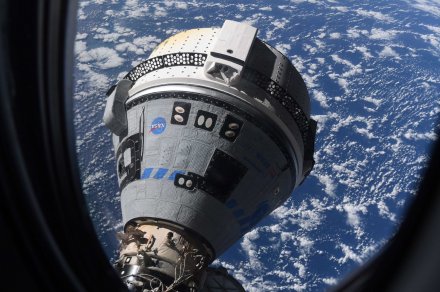
NASA astronaut Bob Hines has given interested earthlings their first look inside Boeing’s CST-100 Starliner spacecraft, which docked with the Internationals Space Station (ISS) for the first time on Friday, May 20.
The spacecraft launched from Cape Canaveral in Florida on Thursday in its second crewless flight test (OFT-2) following a failed mission in 2019 when the capsule was unable to reach the intended orbit to take it to the ISS.
Hines offered a brief tour of the Starliner that, once fully tested, will take astronauts to and from the space station in missions launched from U.S. soil.
"Welcome to #Starliner for the very first time ever, in space." @Astro_FarmerBob takes us on a tour inside the @BoeingSpace spacecraft that arrived on Friday, May 20, on a demonstration flight to the International @Space_Station: pic.twitter.com/uaezcvaWGw
— NASA (@NASA) May 21, 2022
The footage from inside the Starliner spacecraft includes a glimpse of Rosie, a sensor-laden mannequin designed to help researchers learn more about the performance of the spacecraft during its voyage and its effects on the human body.
Some have commented on how the interior of the spacecraft appears to look cluttered compared to NASA’s operational capsule, SpaceX’s Crew Dragon, though to be fair the footage doesn’t show us the entirety of the Starliner’s interior, making it difficult to make a broader assessment of the design.
NASA posted a photo (below) of the Starliner docked at the station, adding that its systems have been powered down as they would be during a regular mission to the orbiting laboratory.
#Starliner has entered a planned quiescent phase while docked to the @space_station, which means its systems were powered down just like they would be during a long-duration mission.
📷: @AstroSamantha pic.twitter.com/YuS53J59kk
— Boeing Space (@BoeingSpace) May 22, 2022
The Starliner will stay docked at the space station for between 5 and 10 days before returning to Earth in a parachute-assisted landing in New Mexico. NASA and Boeing will then fully evaluate the success of the flight before deciding whether to schedule a crewed test of the spacecraft in another mission to the International Space Station, possibly before the end of this year.
The Starliner can accommodate up to seven passengers, or a mix of crew and cargo. For the current mission, the spacecraft transported around 500 pounds of cargo to the ISS.
Boeing describes the Starliner as having an “innovative, weldless structure,” and the vehicle is robust enough to be used up to 10 separate missions, with a six-month turnaround time. And similar to the Crew Dragon, it also includes wireless internet and tablet technology for crew interfaces.
Attention is now turning to the return leg of the Starliner’s journey, which will see the capsule subjected for the first time to the extreme forces of re-entering Earth’s atmosphere. NASA expected to release a detailed schedule for the trip home soon.
Editors’ Recommendations
Credit: Source link


Comments are closed.